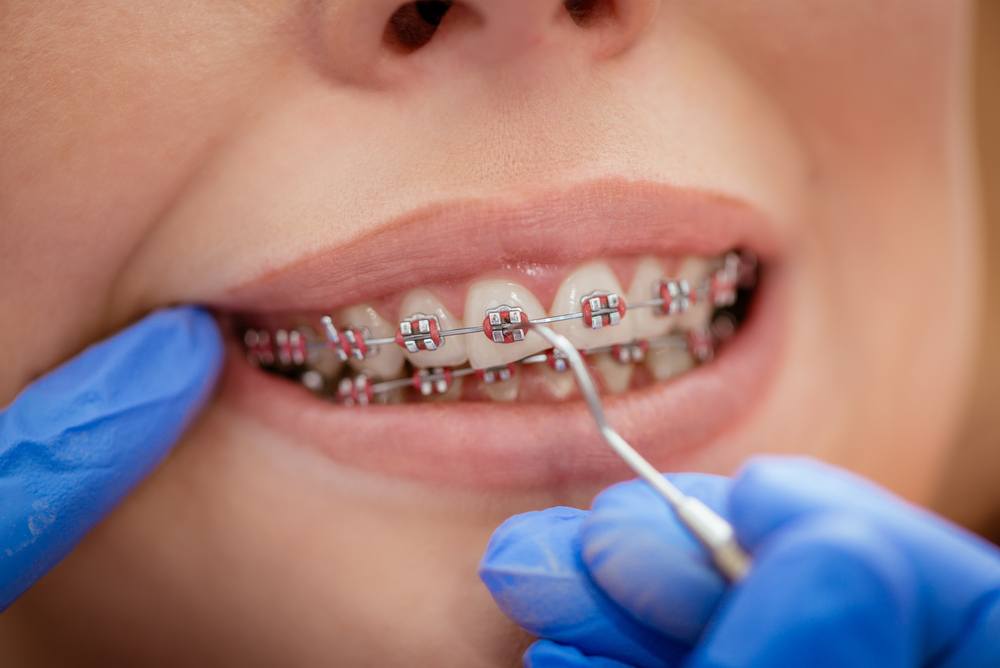What Sets Cumming Braces and Aligners Aside From Various Other Orthodontic Treatments
What Sets Cumming Braces and Aligners Aside From Various Other Orthodontic Treatments
Blog Article
Comprehensive Guide to Orthodontics Procedures for Correcting Oral Imbalances
Recognizing the intricacies of each procedure, including their devices, benefits, and prospective drawbacks, is essential in making educated decisions concerning one's orthodontic treatment. As we browse via the thorough overview to orthodontic treatments for fixing oral imbalances, the detailed information of each technique will unfold, losing light on the path towards a unified and practical dental alignment.
Orthodontic Procedures Overview

In addition to clear aligners and typical dental braces, orthodontists may also suggest various other interventions like headwear, palatal expanders, or retainers to deal with details placement concerns (cumming orthodontist). These procedures are tailored to every patient's unique needs and may include a mix of therapies to achieve the wanted results. Routine changes and surveillance are important parts of orthodontic treatment to make sure progression is on track and to make any necessary adjustments along the way. By going through orthodontic procedures, people can not only achieve a straighter grin but also boost their general oral health and wellness and feature.
Traditional Dental Braces: Exactly How They Function
When taking into consideration orthodontic therapies for oral misalignments, typical braces stand apart as a reliable approach for remedying teeth placing. Conventional dental braces contain brackets, wires, and bands that interact to use continuous stress on the teeth, slowly moving them into the desired placement. The brackets are affixed to the teeth utilizing a special adhesive, and the cords are threaded through the brackets. By changing the stress of the wires, orthodontists can manage the instructions and pressure put on each tooth, assisting them into proper positioning gradually.
As pressure is applied to the teeth through the dental braces, the bone bordering the teeth is improved to sustain the brand-new tooth positions. Individuals will need normal changes at the orthodontist's workplace to guarantee the dental braces proceed to use the right stress for effective teeth movement.
Invisible Aligners: Pros and Disadvantages
These clear, custom-made trays are basically undetectable when used, making them an appealing option for people seeking a more visually pleasing orthodontic treatment. Clients can remove the aligners before consuming or brushing their teeth, decreasing the risk of food getting stuck in the appliance and streamlining the cleansing procedure.

Surgical Orthodontic Options
Surgical treatments in orthodontics present practical alternatives for resolving complicated oral imbalances that may not be efficiently fixed through traditional orthodontic therapies. While standard dental braces and invisible aligners can correct many orthodontic concerns, specific instances require medical treatment to attain ideal results. look at this web-site Surgical orthodontic options are commonly recommended for severe malocclusions, significant jaw disparities, and cases where the underlying bone framework needs alteration to accomplish correct positioning.
One common medical orthodontic treatment is orthognathic surgical procedure, which entails repositioning the jaws to remedy useful issues such as trouble chewing or talking. This surgery is usually performed in cooperation with an orthodontist who helps align the teeth prior to and after the procedure. Surgical orthodontics may additionally involve procedures to reveal affected teeth, get rid of excess gum tissue, or reshape the jawbone to create a much more unified facial account.
Before thinking about surgical orthodontic alternatives, people go through an extensive examination to identify the necessity and prospective advantages reference of such interventions. cumming orthodontics. While surgical treatment might appear challenging, it can dramatically boost both the function and aesthetics of the smile in instances where traditional orthodontic treatments fall short
Retainers and Post-Treatment Care

Failure to comply with post-treatment treatment guidelines can result in relapse, where the teeth slowly move back towards their initial settings. Regular retainer wear, good dental hygiene, and normal dental examinations are necessary for keeping the outcomes attained with orthodontic surgery and guaranteeing the long-term security of the fixed oral positioning.
Final Thought
In conclusion, orthodontic procedures offer different alternatives for remedying dental misalignments. Surgical orthodontic alternatives are available for extra serious misalignments. dig this On the whole, orthodontic procedures can effectively enhance oral health and wellness and visual appearance.
As we navigate with the thorough guide to orthodontic procedures for remedying dental misalignments, the complex information of each approach will unfold, shedding light on the course towards a useful and harmonious oral positioning. - cumming aligners
One of the most typical orthodontic treatments is the use of dental braces, which consist of metal brackets and cables that apply mild pressure to gradually move teeth right into the desired placement.When taking into consideration orthodontic treatments for oral imbalances, traditional dental braces stand out as a time-tested approach for correcting teeth positioning. In addition, unseen aligners might not be ideal for complex orthodontic issues that need more considerable teeth activity, as they are commonly advised for light to modest instances. Retainers are customized orthodontic gadgets made to hold teeth in their corrected positions after the completion of orthodontic treatment.
Report this page